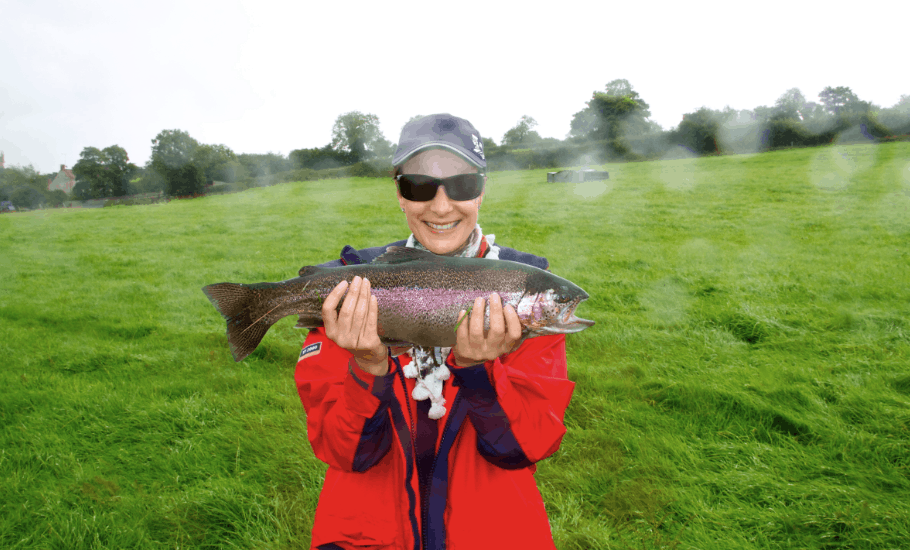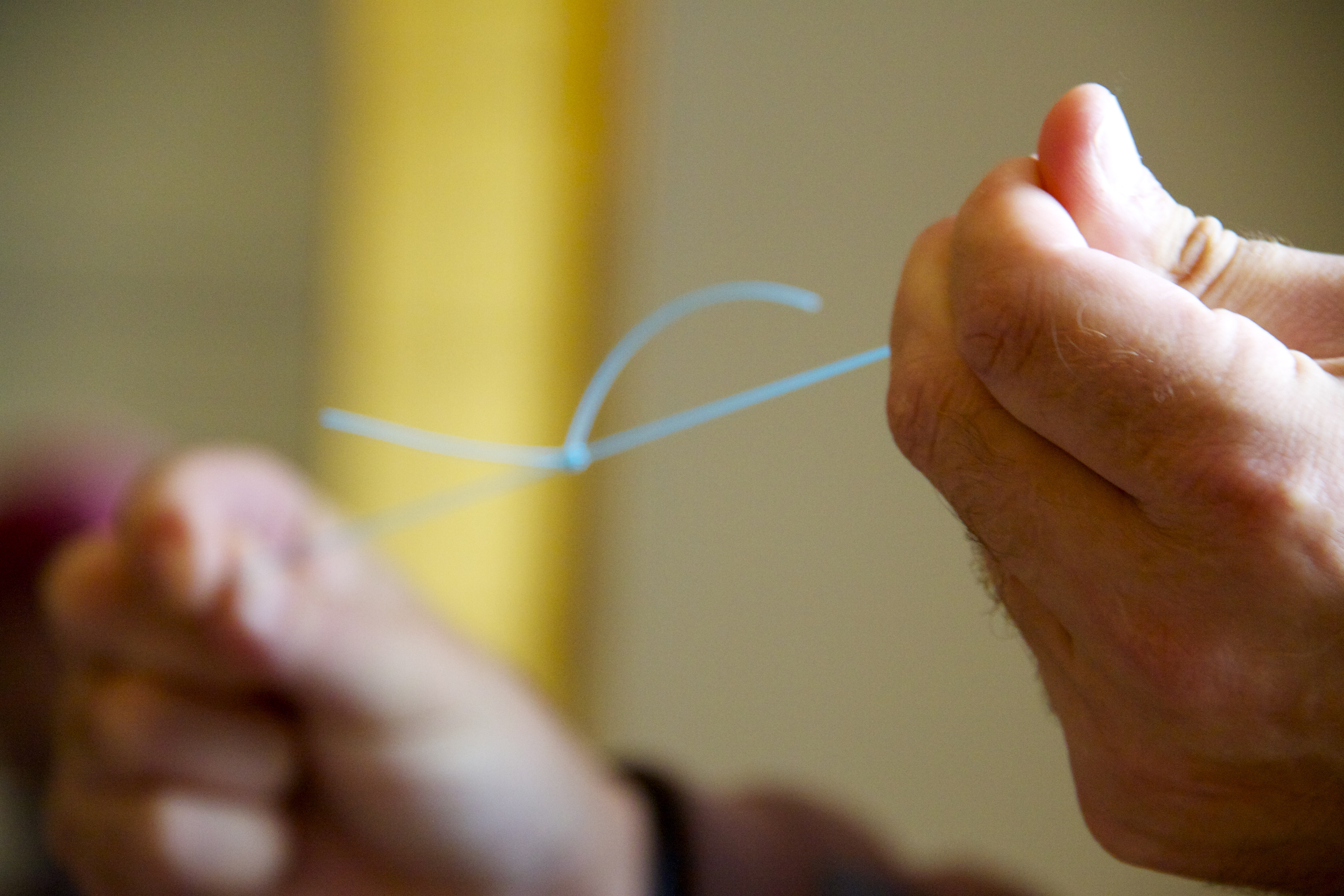It’s only an hour and a half from London Paddington to Bath Spa on the train and Vale House Kitchen is a short taxi ride away in the pretty village of Timsbury. This country skills and cookery school is offering punters the chance to learn fly fishing and shooting skills, foraging, chutney and jam making, bread making, seasonal cookery and a whole bunch more.
Bod and Annie Griffiths who live in Vale House, have employed the best teachers in the area to run their courses, with the chef Tim Maddams acting as the Head Tutor. No stranger to teaching hundreds of thousands of people how to cook, if you’re a fan of Hugh Fearnley-Whittingstall then you’ll know Tim, he’s featured on many River Cottage programmes.
The Vale House high-spec kitchen is in the eaves of a converted block which sits neatly behind the magnificent family home. There are separate work stations with plenty of room for students to work, on some of the best equipment money can buy. I’m here as a guest on the Fly Fishing Experience a 2-day course which introduces you to the skills of fishing on the fly on day 1 and how to handle and cook your catch, along with other fish dishes, including information on how to choose and buy fish responsibly on day 2.
I am desperate to try my hand at fly-fishing with one of the foremost experts in the field and I wish my instructor Neil the Best of British. Clumsy, ham-fisted and un-coordinated are just a few of the adjectives that sum up my beach fishing expeditions as a teenager so I’m not holding out much hope when it comes to fishing on the fly. Our patient, kindly tutor Neil Keep is struggling with a sore throat, the wind and sideways rain add little to help him explain the casting we’ll be putting in practice on a lake in the afternoon. Just for now, we’re on the lawn in the front of Vale House.
I’m the only woman here on the course with three others all of mixed ability, and Bod is managing the day with his wife Annie and gorgeous son who pop out occasionally with cups of warming coffee and biscuits.
Like any hobby, you can buy the very basics or spend your entire salary buying the very best but the basic equipment for fly fishing is a rod, a reel and a weighted line, along with the all-important fly tied to a small hook
We’re taught to forward cast – the fly is whisked into the air, over the shoulder, until the line is almost straight and it’s then flicked forward using the forearm. I learn very quickly th my technique of flicking back and forward not only doesn’t get the fly very far into the ‘water’ but it tends to get caught on grass and bushes immediately behind me. There really is a knack to it. And I finally get the hang of it, but only just. When the rain gets a little too much and our arms begin to ache, we’re taken into the dining room for lunch.
We’re allowed some of Bod’s homemade fish pie when we’ve mastered the art of knot-tying – it’s a Blood Knot that usually ensures the fly is secure to the line then we make our way to Cameley Lakes to try our skills on the water.
We’re told the lakes are well-stocked and once we wear Polaroid glasses we see large brown and rainbow trout passing the time of day feet away from the bank.
I cast, with a Crane Fly (daddy-long-legs to me) and to my total surprise, and that of the men, I get a bite. Three minutes later I’ve teased in a rainbow trout that’s almost 5lbs.
We have no more luck but leave with one fish and a large bag of sloes we free from a nearby Blackthorn Bush, we’re driven back to our B&B for a much-needed hot bath and a good night’s sleep.
The next morning, we’re collected by Bod for round two. Just three of us have made it through to the fish cooking and the first thing we see is how to gut the fish I caught.
http://www.youtube.com/watch?v=nlGAaCCCpKo
We’re treated to some trout sashimi with a little soy sauce and English mustard dip – Tim says you really need to know where the fish is from and how old it is before you prepare to eat it raw. Luckily this trout is from a local supplier, who also happens to be on the course, so if it was any fresher we’d have to slap it.
We prepare the fish with two cures, rubbed on the fish until it’s soaked into the skin and then washed off
before it’s smoked in an electric smoker.
Whilst we’re waiting for the fish to get smoked, Tim makes a rather delicious canape with the roe which he poaches,
and knocks up an impressive liver pate which we scoff before I get the chance to take any photographs.
The two dishes weren’t even on the curriculum and that’s what I love about the teaching method at Vale House it’s free-form instruction with top tips as you go and it’s something I’ve not experienced on past cookery course. There’s a structure to both days but it’s not at all regimented, quite relaxed and it’s a fun atmosphere to learn. Tim’s a fascinating man and he’s hugely passionate about ethically produced, sustainable, locally sourced food and this is core to everything he does. He’s still involved in Hugh’s Fish Fight and explains to us what fish we must be asking the fishmonger and the questions we need to ask about its provenance.
The fish takes around 15 minutes to smoke and takes on a lovely flavour.
Our first dish is a smoked trout and roasted tomato salad, dotted with local Rapeseed Oil from Bath Harvest.
Crab and mussels are a little scarce inland so Bod orders a box of fish and shellfish from Cornwall and we marvel at the size of the crabs.
We learn to fillet a flat fish.
and we make a fish stock with everything left after we’ve filleted it.
and Tim’s take on a sole Meunière, for lunch.
Later we learn how to humanely kill a crab,
remove the meat
and the grey gills from the body, often called ‘dead man’s fingers’, not because you’ll die if you eat them but because they’re very tough and indigestible.
and make a tasty crab, mussel and chilli pasta dish.
I ask Tim about other shapes to make by hand with the pasta dough and he shows me a few without hesitation.
Tim has a fabulous way with his students and a great sense of humour coupled with plenty of patience and the day goes far too quickly, our group bonds so well, it actually feels like we’ve known each other forever.
We discover who gets the scraps we’ve been saving throughout the day – chickens and pigs feast on the leftovers that won’t make them poorly.
I’ll definitely be returning to Vale House Kitchen but with Mr – I just know the Pig Butchery will be right up his street. There are so many things I’d like to do from jam making to wedding cake decoration, if only I lived nearer, I think I’d end up becoming an extended member of the Vale House Family.
If you’re visiting Bath or indeed Bristol, why not book a one day or two day course at Vale House Kitchen, country pubs, long walks and new skills, what’s not to love?
Tim runs his own creative food company Green Sauce so caters for parties (and weddings if you can secure him) as well as teaching at Vale House Kitchen and at River Cottage.
Vale House Kitchen, Loves Hill, Timsbury, Somerset BA2 0EU
01761 470401
Twitter: @Valehousekitch








































